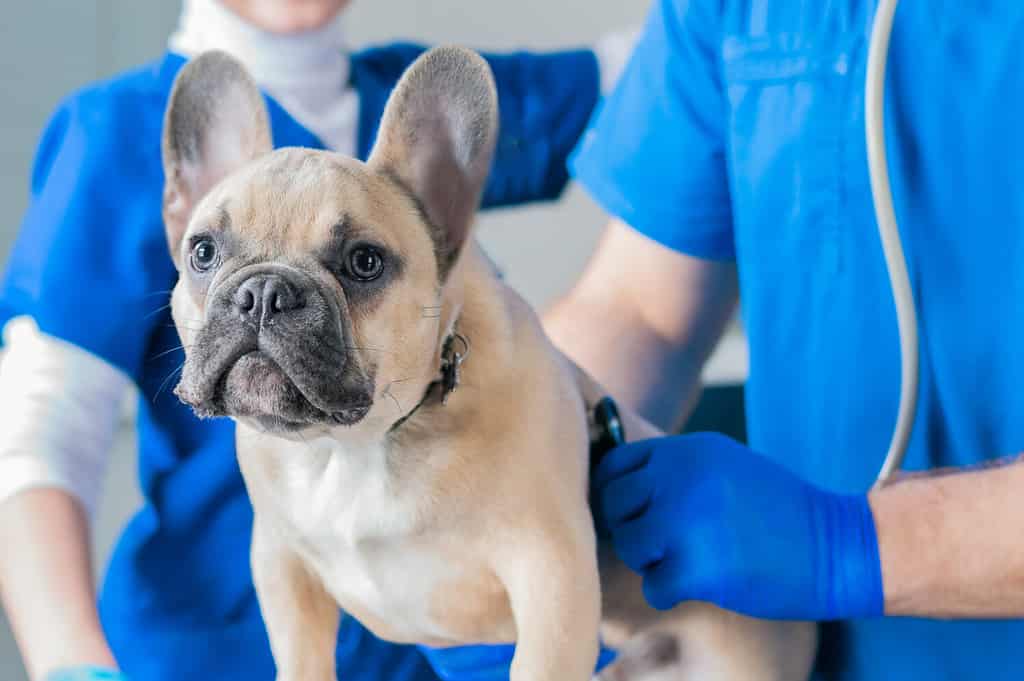
French bulldogs differ from English in their long ears, shorter body, and slightly better breathing ability.
©Andy Gin/Shutterstock.com
Dogs are man’s best friend because canines and people have supported each other throughout history. They are the most popular pets in the U.S., with approximately 65.1 million homes owning a dog.
Dogs come in various sizes, shapes, colors, and coat types thanks to various breeding programs and curious breeders mixing different breeds. Puppies like the Pomsky (Pomeranian and husky) or the goldendoodle (golden retriever and poodle) are recent mixed breeds that gained popularity in the 2000s and 1990s.
However, the risk of continually mixing and breeding dogs has a secret cost to their health. Certain dogs that were once tactical hunters are now show dogs with several genetic ailments that owners pay thousands of dollars to keep healthy. Some dogs with these health problems have a shorter lifespan because their bodies cannot handle it anymore.
This article will highlight some of these dog breeds that will develop or will have the most health issues.
Dog Breeds with Most Health Problems
To clarify, not every dog of their specific breed will develop certain issues. Several of these issues may never appear with proper diet, exercise, attention, and medical care. However, these breeds will likely develop one or more health problems over time.
English Bulldog
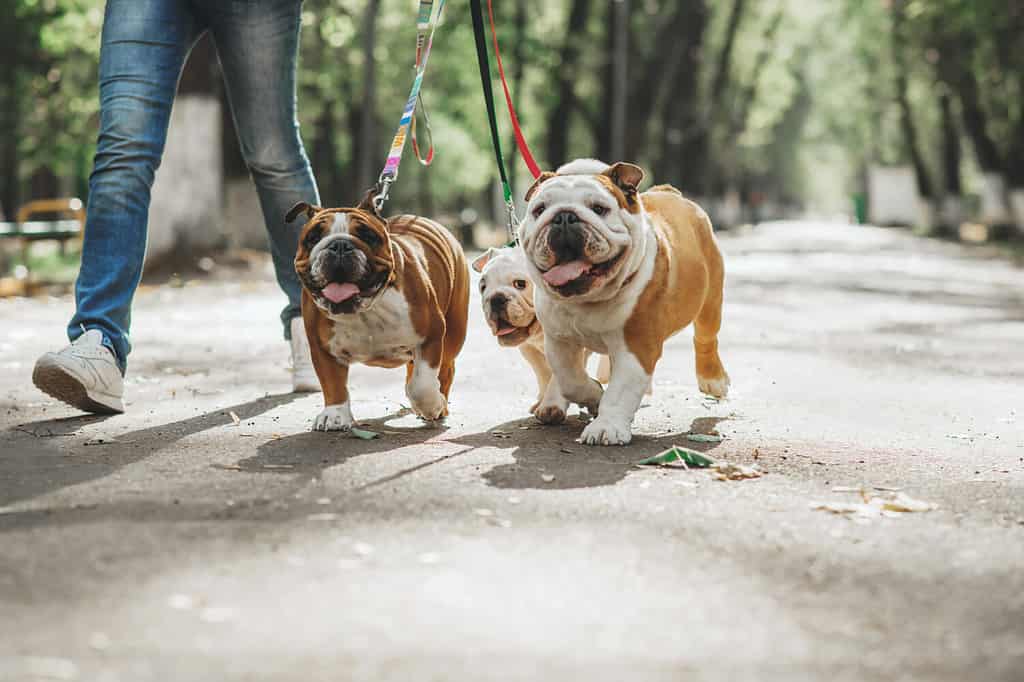
English bulldogs suffer from a long list of health problems due to breeding favoring beauty over needs.
©Ann Tyurina/Shutterstock.com
The English bulldog is a common household pet, with parents favoring their small and stout size, squished-in faces, and stubby tails. Gaining popularity in the 13th century, English bulldogs originally competed in dog fighting and bull-baiting events.
The breed was bred to have small and shorter features, decreasing the size of its snout, shorter legs, and stubby or no tail, which won it several awards at dog shows.
Pure-breed English bulldogs are so inbred that they are one of the unhealthiest dogs to own.
Common Health Problems for English Bulldogs:
- Brachycephalic Obstructive Airway Syndrome (BOAS): BOAS is a chronic illness that causes difficulty breathing, exercise intolerance, fainting, vomiting, and overheating. Dogs that have the iconic flat-face features will suffer from this.
- Hip Dysplasia: This occurs when the hip joint does not develop properly, and the joint slips from its socket. This happens with dogs sitting on the side of their hips, which causes joint stress. The joint may partially dislocate and cause pain.
- Luxating Patella: This is the dislocation of the kneecap. Bulldogs have broad shoulders, so they walk with a wide gait. Too much stress or old age may result in their kneecaps slipping from their socket. This is a very common injury for sporting dogs.
- Obesity: Modern domestic dogs need plenty of exercise. Bulldogs that can free-feed all day with minimal physical exercise may become overweight and obese.
- Skin Issues: English bulldogs have several layers of skin folds. These folds trap moisture, allowing bacteria to grow and cause infections. Many bulldogs also suffer from allergies, which make the skin flaky and irritated.
- Eye Issues: Flat-faced dogs are more likely to get eye infections, conjunctivitis (inflammation in the eyes), and cherry eye (the tear gland turns red and sticks out).
- Ear Infections: English bulldogs have open ear canals, allowing dirt, water, and debris to fall in more easily. Too much debris in the ears will lead to ongoing ear infections, which can be painful.
- Heart Diseases: English bulldogs have a higher risk of developing heart issues. Their flat faces limit oxygen intake, forcing the heart to work harder to pump oxygen throughout the body.
English bulldogs are so unhealthy, they only have an average lifespan of eight to 10 years, with a rare few reaching 11.
German Shepherds
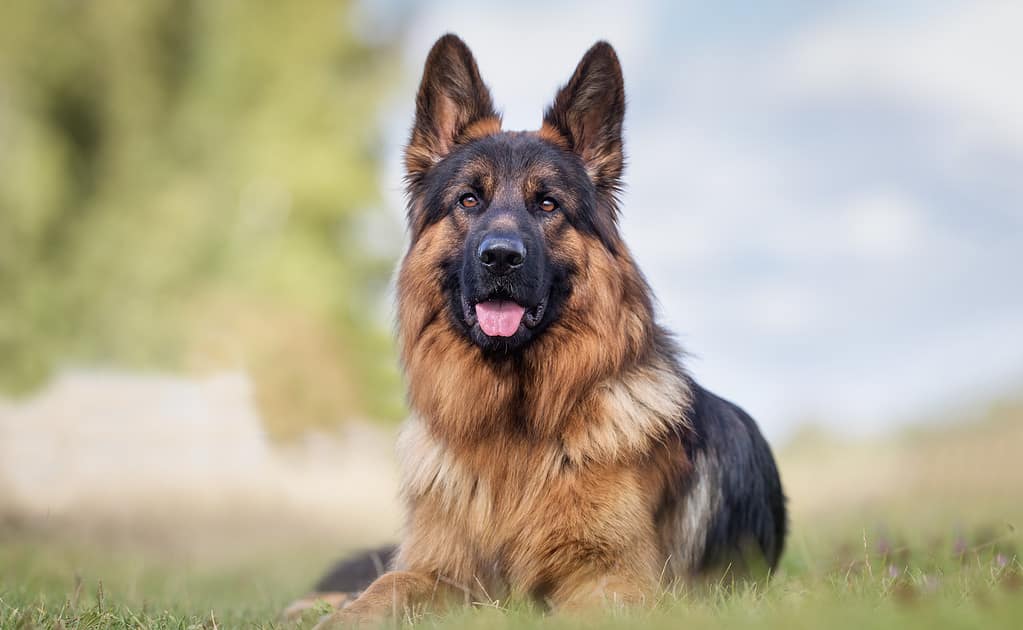
Purebred German shepherds have a higher risk of inheriting genetic issues like EPI or epilepsy.
©Bigandt_Photography/ via Getty Images
German shepherds are large-breed herding dogs originating in Germany around the 1800s. They are popular at dog shows, as police dogs, rescue dogs, and guard dogs for families.
Common Health Problems of German Shepherds
- Hip + Elbow Dysplasia: Similar to hip dysplasia, elbow displays are when the elbow does not develop properly and may fall from the joint. Large-breed dogs like the German shepherd are more likely to develop this over time because their older joints have difficulty supporting their heavy bodies.
- Degenerative Myelopathy (DM): DM is a chronic degenerative, neurological disorder that affects the spinal cord, resulting in poor coordination, slower movements, and possibly paralysis.
- Allergies: German shepherds develop allergies either genetically from their parents which can lead to dry and flaky skin, skin irritation, fever, and constant discomfort.
- Cancer: Hemangiosarcoma is a specific cancer that reveals itself as a tumor. This is the most common type of cancer German shepherds may experience and can be difficult to remove if the tumor cells spread throughout the body.
- Exocrine Pancreatic Insufficiency (EPI): EPI is a health disorder when the pancreas does not produce enough digestive enzymes. Dogs with EPI suffer from malnutrition, bloating, chronic fatigue, cramps, and loss of muscle mass.
- Epilepsy: German shepherd breeds have a high risk of experiencing epilepsy due to genetics or ulterior health complications that affect the nervous system.
- Heart Disease: Heart diseases like dilated cardiomyopathy or heart murmurs will cause stress on the dog’s overall health by reducing the amount of oxygen pumping through the body. Again, a common issue with large-breed dogs is how their senior bodies struggle to maintain their bigger size.
- Bloat: Bloating is a serious condition that can be lethal when untreated. Gastric Dilatation-volvulus (GVD) or bloat, is when the stomach rapidly fills with air, food, or water, and twists. It happens without warning and is very painful for the dog.
Great Danes
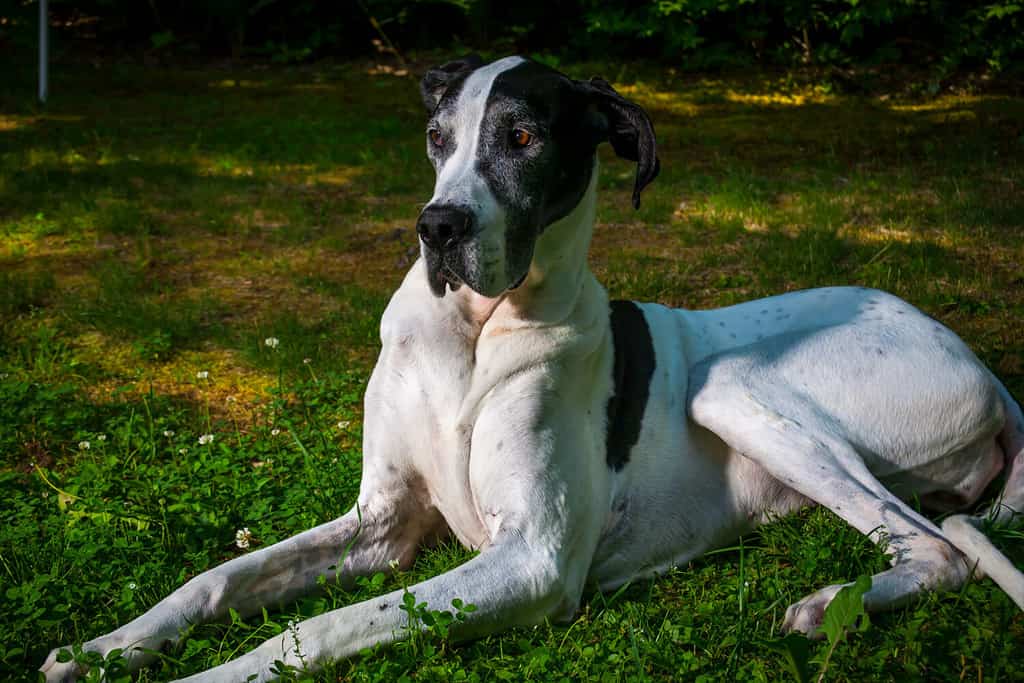
Sadly, Great Danes only live between eight to 10 years because of their many health issues.
©Arthur Villator/Shutterstock.com
Great Danes are one of the tallest dogs in the world. Their tall and lanky bodies make them iconic and easily recognizable, and their sweet demeanors make them attractive pets. However, older Great Danes struggle to support their larger bodies, causing them several health issues.
Common Health Problems with Great Danes
- Hip Dysplasia: Condition where the hip joint partially pops from the socket.
- Dilated Cardiomyopathy (DCM): DCM is when the heart’s main pumping chamber (ventricle) enlarges, making the heart use more energy to pump blood through it. This leads to fatigue, shortness of breath, chest pain, and heart palpitations.
- Osteosarcoma: Osteosarcoma (bone cancer) is a specific cancer that affects the bones in dogs. This is very common for large-breed dogs and very difficult to treat.
- Hypertrophic Osteodystrophy (HOD): HOD is a peculiar situation where a dog’s rapidly growing bones swell and inflame the limbs. This will occur during puppyhood when the dog is still growing but grows too fast.
- Osteoarthritis: This is a degenerative joint disease (DJD) that weakens the joints and deteriorates their range of motion. Arthritis is the most likely medical issue all Great Danes will experience in their lifetime.
- Bloat: Swelling and twisting of the stomach. The dog must be immediately taken to the emergency room, or it could become lethal.
Bernese Mountain Dogs
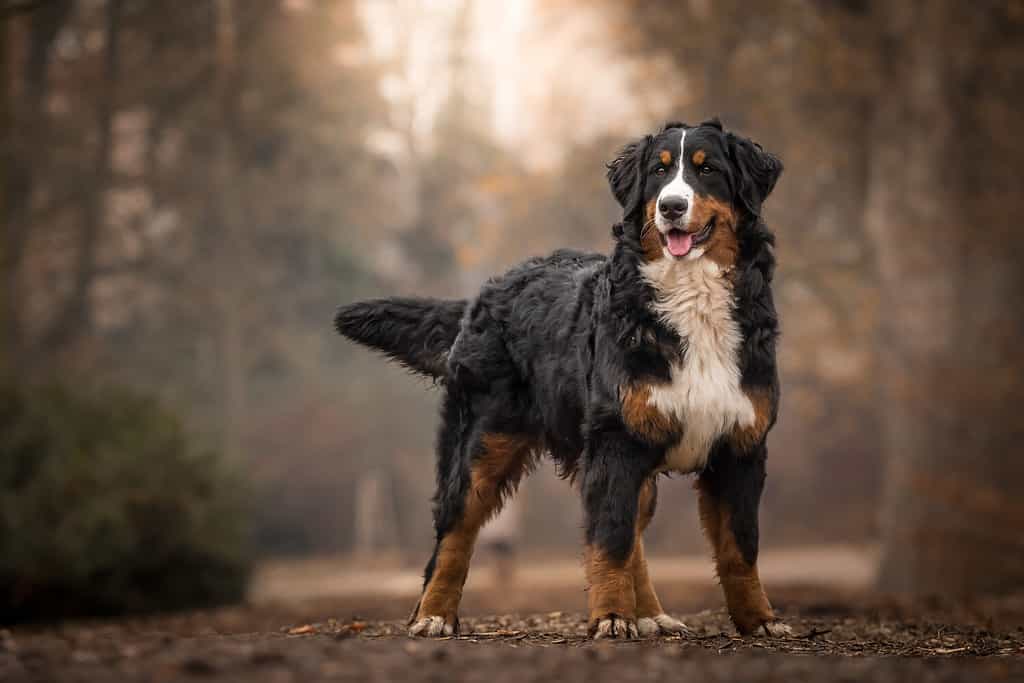
Bernese Mountain dogs are excellent caregivers, making their short life spans more impactful.
©xkunclova/Shutterstock.com
The Bernese Mountain dog is everyone a pet parent would want for a big family dog. They are friendly, fluffy, attentive, gentle around children, can guard the home, and are easy to train. Unfortunately, they are one of the unhealthiest breeds a family can have due to genetic issues and their large size. On average, a Bernese Mountain dog may live six to eight years which is shorter than other dogs.
Common Health Problems with Bernese Mountain Dogs
- Cancer: Continuous inbreeding increases the risk of cancer in these dogs. A Bernese Mountain dog may develop one or multiple types of cancers from a compromised immune system from constant inbred overbreeding.
- Cataracts: Cataracts is an eye issue where the lens becomes cloudy. The dog will have a harder time seeing, eventually leading to them going blind in severe cases. It is manageable as long as the dog remains in a safe environment and pet parents guide their pup around the house, but the reduced visibility can be difficult.
- Hypothyroidism: This condition is the result of the thyroid gland not producing enough hormones in the body. Hypothyroidism can lead to other health effects like obesity, lethargy, poor coat quality, and irritated skin.
- Allergies: Food and environmental allergies range depending on the individual dog.
- Hip Dysplasia
- Bloat
Dobermann Pinschers
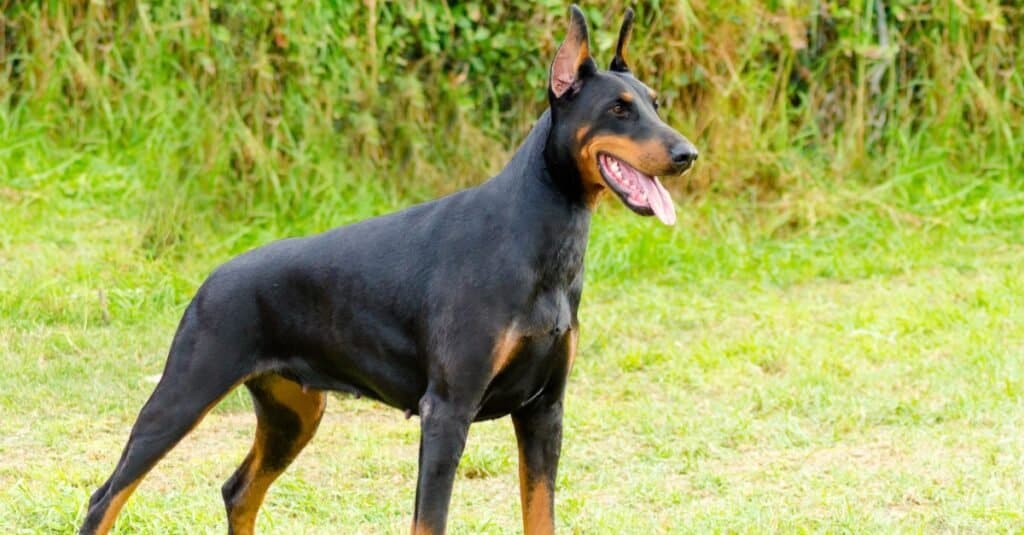
Dobermanns are strong and muscular dogs who develop many joint and ligament issues as they age.
©iStock.com/f8grapher
Another German-raised dog, the Dobermann is a working dog breed that was raised to protect people,
Dobermanns are another large breed of dog that suffers from similar issues as German shepherds and Bernese Mountain dogs.
Common Health Problems with Dobermanns
- Coagulopathy: Coagulopathy is the condition where blood does not clot quickly. Without proper blood clotting, dogs have a higher risk of suffering complications during surgery while suffering blood loss from injury.
- Kidney Issues: Dobermanns genetically have a higher risk of experiencing kidney issues due to inbreeding. Specifically, Dobermanns experience glomerulonephropathy which damages the kidneys, causing them to fail. This happens at an early age, affecting young to adult Dobermanns.
- Hip Dysplasia
- Heart Disease
- Boat
- DCM
- Arthritis
Cocker Spaniels

Cocker spaniel’s big ears help them pick up scents, but also pick up dirt which causes ear infections.
©Aneta Jungerova/Shutterstock.com
A happy, gentle, and loving dog, the cocker spaniel is a medium-sized dog popular with families with young children. They have large floppy ears which feel velvety smooth and a coat that shines in the sun. Cocker spaniels were one of the favorite dog breeds in America for many years until usurped by the French bulldog.
Common Health Problems with Cocker Spaniels
- Ear Infections: The iconic ears of Cocker spaniels are a double-edged sword for the breed. Their large ears pick up dirt and capture moisture easily.
- Eye Issues: Cocker spaniels are genetically at risk for developing glaucoma and cataracts. Progressive retinal atrophy (PRA) is a degenerative disease affecting the photoreceptor cells in the dog’s eyes. Like other eye diseases, the dog will lose some or all sight in their eyes, depending on the severity of the condition.
- Skin Issues: allergies, infections, and dandruff are common among cocker spaniels.
- Heart Issues: DCM and mitral valve disease (MVD). Basically, MVD is a condition in small and medium-sized dogs where the mitral valve near the heart degrades while thickening until it pops from its specific location.
- Hip Dysplasia
French Bulldogs

Also known as “Frenchies,” French bulldogs suffer from breathing issues and ear infections.
©Lukas Maverick Greyson/Shutterstock.com
French bulldogs are very similar to English bulldogs, but much smaller in size. They also have large bat ears and less wrinkly faces than the English bulldog. According to the AKC, the French bulldog is the most popular dog breed in the U.S. as of 2022.
Common Health Problems with French Bulldogs
- Brachial Issues: Frenchies share the same issues as English bulldogs, with poor breathing and oxygen regulation. However, their smaller bodies and thinner frames give them more leeway with heat regulation and vomiting.
- Eye Issues: French bulldogs have much bigger eyes than their English counterparts, making them susceptible to eye conditions like cataracts, cherry eye, and inflammation. Essentially, their big and lovable eyes are also a source of their main health issues.
- Allergies
- Ear Infections
Mastiffs

Mastiffs are considered a giant-breed dog due to their massive weight and size.
©Pavel Shlykov/Shutterstock.com
Next, mastiffs are the largest dog breed in the world. Weighing between 120-130 pounds, they are massive working dogs that humans befriended in ancient times. Docile by nature, they are formidable fighters and dedicated protectors of their families.
Common Health Problems with Mastiffs
- Entropion: Entropion is a medical condition where the eyelid folds inward. Sadly, It is very uncomfortable because the eyelashes irritate the cornea as they rub against the eyes.
- Bloat
- Hip + Elbow Dysplasia
- Epilepsy
- Skin Infections
- Arthritis
- Cancer and Tumors
Pugs

Domesticated pugs are overfed and taken for short walks, increasing their chances of obesity.
©Monica Click/Shutterstock.com
Pugs are small, mischievous, and fun-loving toy breed dogs that date back to 400 B.C. Originating in China, they were companion animals for royal families along with the Pekingese. They have flat-face wrinkles like bulldogs because pug breeders found that marking favorable.
Common Health Problems with Pugs
- Pug Dog Encephalitis (PDE): PDS is an inflammatory condition in the brain that causes seizures, vision impairment, spontaneous circling, and other erratic behavior. It affects small breed dogs the most as it is inherited from the parents.
- Allergies
- Luxating Patella
- BOAS: brachial issues like bulldogs
- Eye Issues: dry eyes, entropion
- Hip Dysplasia
- Hypothyroidism
- Skin Infections
Shar-Pei

China favors dogs with wrinkly faces, which increases chances of skin infections from trapped moisture.
©Alexeysun/Shutterstock.com
The Chinese Shar-Pei is a unique dog breed that has distinct features. Chinese culture favored dogs with wrinkles and bred dogs to maintain those traits as a dominant feature. Dogs like pugs, shar-peis, chow chows, and Pekingese all have the same wrinkles as a dominant trait. However, these aesthetic features pose many health risks for skin conditions.
Common Health Problems with Shar-Peis.
- Hip Dysplasia
- Skin Issues: inflammation, infections, allergies
- Bloat
- Hypothyroidism
- Luxating Patella
- Fevers
- Glaucoma
Boxers

Though prized for their strength and trainability, boxers often succumb to bone cancer.
©Gabor Kormany/Shutterstock.com
Boxers are large breed working dogs who are popular for their fun-loving attitudes, trainability, and good with young children. They date back to 2500 B.C. and the breed humans recognize today grew in popularity in Germany around the 1800s. As a working dog breed, they worked as police dogs, fighting dogs, war dogs, and show dogs.
Common Health Problems with Boxers
- Cancer
- Bloat
- Skin Issues: allergies, inflammation
- Obesity
- Degenerative myelopathy
- Hypothyroidism
- Epilepsy
- Kidney disease
- Arthritis
Rottweiler
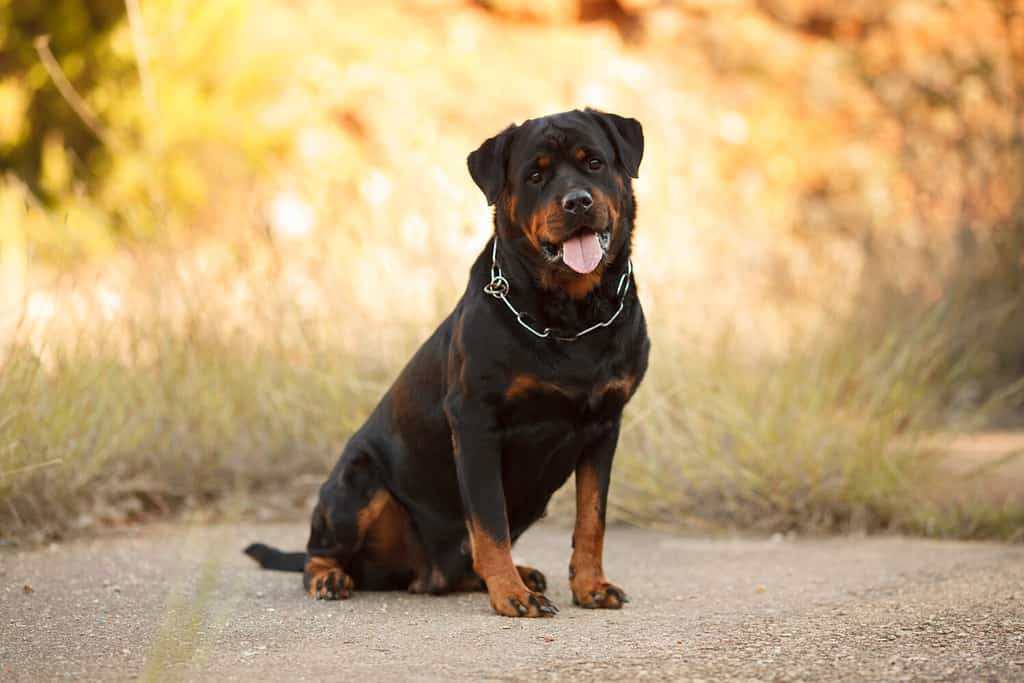
Rottweilers suffer from obesity with local families who do not exercise them enough.
©Serova_Ekaterina/Shutterstock.com
Finally, rottweilers are the last dog on our list. Forged in the ancient years of continual conflict during the Roman empire’s time, rottweilers would guard herds and eventually families in times of peace. The breed has an unfortunate stigma against them, being called aggressive. Rottweilers that are well-trained and socialized in their puppy years are not aggressive and are excellent companion pets. Their strong build and muscular frames make them capable of performing many tasks with ease, which is why they are exemplary search-and-rescue workers.
Common Health Problems with Rottweilers
- Allergies
- Heart disease
- Obesity
- Kidney disease
- Cataracts
- Cancer (osteosarcoma)
- Hip + Elbow dysplasia
- Epilepsy
Remember, every dog is different and has their own medical requirements to keep them healthy. A group of dogs may be susceptible to a specific disease, but that does not mean they will inherit or be afflicted by said disease. Responsible pet parents should always be on the lookout for any signs of distress or pain in their pets and see a veterinarian immediately to combat diseases before they worsen.
The photo featured at the top of this post is © Nestor Rizhniak/Shutterstock.com
Ready to discover the top 10 cutest dog breeds in the entire world?
How about the fastest dogs, the largest dogs and those that are -- quite frankly -- just the kindest dogs on the planet? Each day, AZ Animals sends out lists just like this to our thousands of email subscribers. And the best part? It's FREE. Join today by entering your email below.
Thank you for reading! Have some feedback for us? Contact the AZ Animals editorial team.







